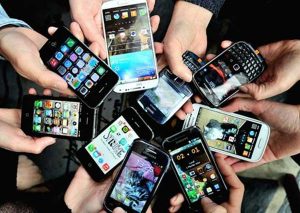Cell phones or what they call cell phones-many cell phones (if any) use only a few different cell phone jammer standards to work. In the United States, there are few incompatible telecommunications standards for communication systems, while Germany has adopted a more different approach in organizing mobile phone communications. Like almost all European countries, Germany uses the GSM frequency band as the main frequency of mobile phones. In Germany, there are four main competing GSM standards-D1, D2, E2 and E-Plus.
There are currently two large mobile networks and four telecommunications companies using them in Germany:
D Net
The digital cellular network is used by two companies-T-Mobile Deutschland (owned by Deutschland Telekom, using frequency bands GSM900 and GSM1800, standard D1) and Vodafone D2 (UK company, frequency bands GSM900 and GSM1800, standard D2). D1 and D2 German mobile radio standards are in the GSM900 frequency band. Therefore, T-Mobile and Vodafone use not only the D network but also the E network.
Electronic network
This digital cellular network was established in 1994 to enable mobile phones to work with low power. E-Plus Mobifunk (GSM1800 band, E2 and E-Plus standards) uses this network. As the fourth mobile operator-O2 Germany (owned by Telefónica), they also use the GSM1800 frequency range and therefore also comply with this standard. Therefore, all major mobile phone companies in Germany use this network.

3G UMTS
These frequency ranges are provided by all four large German mobile phone companies. The 3G frequency band was auctioned in the early 2000s, and Germany now has extensive 3G access nationwide. The 2100 MHz band is used as the main 3G band. However, German mobile operators are gradually integrating 3G services into the 900 MHz frequency range.
4G LTE
In 2010, the Federal Network Administration auctioned the LTE spectrum to obtain 4G communication frequencies. T-Mobile, Vodafone, O2 and E-Plus are very interested in acquiring some frequency bands to create their own 4G LTE service for the Germans. The main spectrum sold in Germany and used for 4G LTE access is 800 MHz. However, more frequency ranges may be added in the future.
Bottom line
The main spectrum of German mobile phones is GSM. Their two main mobile communication networks are D-Netz and E-Netz, which consist of D-Netz D1 and D2 standards and E-Netz E-Plus standards. The D-Netz network uses the GSM900 frequency band to work, while the E-Netz network uses the GSM1800 frequency band to work.
There are 4 major telecommunications operators and mobile operators in Germany: German T-Mobile, Vodafone D2, German O2 and E-Plus Mobifunk. All of these use the GSM, 3G and 4G frequency bands to provide Germans with different types of wireless communications. German 3G is represented by the 2100 MHz UMTS frequency band and is gradually being added to the 900 MHz frequency band. In Germany, 4G LTE mainly works in the 800 MHz frequency range, but other frequencies can be added in the future.